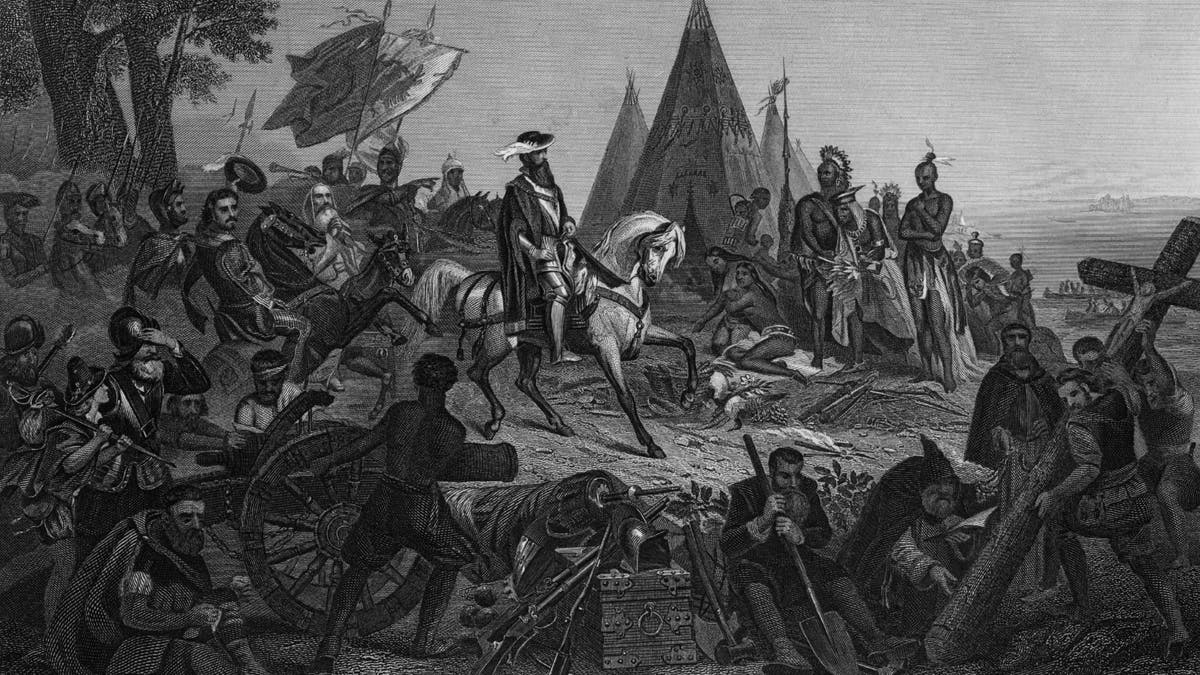
21st May 1540, Spanish explorer Hernando de Soto ( 1500 - 1542 ) 'discovers' the Mississippi. (Photo by Three Lions/Getty Images)
LITTLE ROCK, Ark. (AP) – Archaeologists have unearthed what they believe are the remains of a large wooden Christian cross that Spanish explorer Hernando de Soto placed atop a hill in 1541 in what is now Cross County, Arkansas.
Archaeologists first found a large wooden post at Parkin Archeological State in 1966 and surmised it could be de Soto's cross. Carbon-dating indicated it was cut from a cypress tree between 1515 and 1663, the Arkansas Democrat-Gazette reported Saturday.
Jeffery Mitchem, the Parkin park site archaeologist for the Arkansas Archeological Survey, said he will send a 2-foot chunk of cypress thought to have been used for the cross more than 500 years ago to the University of Arkansas at Fayetteville next week for further testing.
Mitchem learned of the discovery of the potential cross in 1992 -- two years before he became the Parkin park's archaeologist -- and began his research, theorizing then that the wood was from de Soto's cross.
De Soto and his explorers, including several Catholic priests, landed in what is now Florida in 1539 and forged across the Southeast seeking gold and other riches. He crossed the Mississippi River into what is now Arkansas in June 1541 and traveled to Casqui, an Indian village named after its chief, which is now the site of the state park.
According to four accounts of the journey written by de Soto's voyagers, de Soto ordered several of his men to cut a tall cypress tree and build a massive cross. On July 4, 1541, about 100 men raised the cross, according to the accounts.
The explorers only stayed in Casqui for two days before leaving. They returned again later that summer for another two days before heading to southeastern Arkansas. De Soto died in May of 1542.
Mitchem conducted several excavations at Parkin, but none on the largest mound where evidence showed the Casqui chief built his home.
On Monday, survey archaeologist Tim Mulvilhill located the cross's spot, which was marked by UA archaeologists in 1966.
The team then found a section of wooden post Tuesday buried about 2 feet into the soil atop the park's largest mound. Much of the wood was rotted or burned.




















